BOOKS FOR YOU TO READ AND DOWNLOAD
- Vocabulary Education by
B. Mallikarjun, Ph.D. - A CONTRASTIVE ANALYSIS OF HINDI AND MALAYALAM by V. Geethakumary, Ph.D.
- LANGUAGE OF ADVERTISEMENTS IN TAMIL by Sandhya Nayak, Ph.D.
- An Introduction to TESOL: Methods of Teaching English to Speakers of Other Languages by M. S. Thirumalai, Ph.D.
- Transformation of Natural Language into Indexing Language: Kannada - A Case Study by B. A. Sharada, Ph.D.
- How to Learn Another Language? by M.S.Thirumalai, Ph.D.
- Verbal Communication with CP Children by Shyamala Chengappa, Ph.D. and M.S.Thirumalai, Ph.D.
- Bringing Order to Linguistic Diversity - Language Planning in the British Raj by
Ranjit Singh Rangila,
M. S. Thirumalai,
and B. Mallikarjun
REFERENCE MATERIAL
- Languages of India, Census of India 1991
- The Constitution of India: Provisions Relating to Languages
- The Official Languages Act, 1963 (As Amended 1967)
- Mother Tongues of India, According to 1961 Census of India
BACK ISSUES
- E-mail your articles and book-length reports to thirumalai@bethfel.org or send your floppy disk (preferably in Microsoft Word) by regular mail to:
M. S. Thirumalai
6820 Auto Club Road #320
Bloomington, MN 55438 USA. - Contributors from South Asia may send their articles to
B. Mallikarjun,
Central Institute of Indian Languages,
Manasagangotri,
Mysore 570006, India or e-mail to mallik_ciil@hotmail.com. - Your articles and booklength reports should be written following the MLA, LSA, or IJDL Stylesheet.
- The Editorial Board has the right to accept, reject, or suggest modifications to the articles submitted for publication, and to make suitable stylistic adjustments. High quality, academic integrity, ethics and morals are expected from the authors and discussants.
Copyright © 2001
M. S. Thirumalai
BISHNUPRIYA MANIPURI: A BRIEF INTRODUCTION
Ashim Kumar Singha
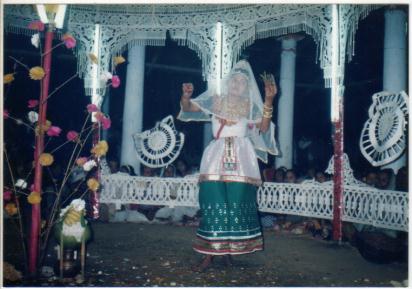
1. The Manipuri Question
In recent years some controversy has arisen as to the validity of the name Manipuri attached to the Bishnupriya speech. I am a native speaker of Bishnupriya Manipuri. In this article I propose to give a short linguistic introduction to Bishnupriya Manipuri and to present my arguments in favor of the validity of attaching the name Manipuri to Bishnupriya.
At the outset I should make it clear that, historically speaking, both Bishnupriya and Meithei were used as languages of communication in Manipur for centuries, and that I do not claim any exclusive right to the appellation (Manipuri) to Bishnupriya only.
As a native speaker of Bishnupriya, however, I feel that the people of Bishnupriya Manipuri group are not given their rightful place and recognition among the languages spoken in Manipur, much against the government and census records as well as the research findings of reputed scholars.
Let us begin by listing the observations of several researchers in the past.
2. Bishnupriya Manipuri: Some Key Observations of Government Records and Researchers
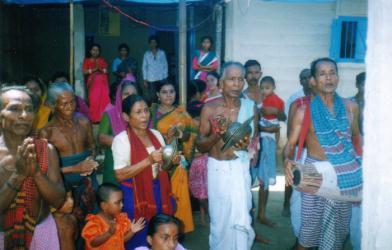
- "There can be no reasonable doubt that a great Aryan wave of very pure blood passed through Manipur into Burma in pre-historic time. I see traces of this in the finely cut features seen now and then among the Manipuris" - Gazetteer of Manipur by Captain E. W. Dun, page 15.
- "A tribe known as Mayang speaks a mongrel form of Assamese known by the same name… They are also known as 'Bishnupiria Manipuris' or 'Kalosa Manipuris' " - Linguistic Survey of India, 1891. Compiled by Sir G. A. Grierson, Vol V, page 419.
- "They (Mayangs) amongst themselves speak their own language, which is a dialact of Hindee" - An Account of the Valley of Manipore by McCullock, 1849.
- "There is, moreover, an Aryan dialect called Mayang still spoken in Manipur, the headquarters of which are two or three plain villages near Bishnupur" - Gait's History of Assam by Shri Padmanath Vidyavinode, 1908.
- "By degrees, the Meiteis became dominant and that name was applied to the entire colony. It is highly probable that these hordes over-ran a country that had been previously occupied by people of Aryan blood known in Western India and to the bards... The present population of Manipur includes a tribe called Meiun who speak a language of Sanskrit derivation. They are now in a servile condition performing the duties of grass-cutters to their conquerors." - Descriptive Ethnology of Bengal by T.T. Dalton, 1872, page 48,49.
- "There is a also a degraded class called the Kalachya or Bishnupuria … They speak a language which is different from that of the true Manipuris" - Assam Census Report by Gait.
- "Mayang, one of the languages spoken in the polyglot state of Manipur, may, however, be classed as a dialect of this language." - Imperial Gazetteer of India, Vol I, 1907.
- "In 1627 A.D. Khgenba introduced the Meitai Language as court language in place of Bishnupriya or Kala-chaia language." - The Background of Assamese Culture by Raj Mohan Nath, page 87.
- "Among the Manipuris, there is a community called Mayang Kalichas who are more dark-skinned than the Meiteis" - Religion and Culture of Manipur by Dr. M. Kirti Singh, 1988, page 53.
- "It is quite probable that Khala-chais are the first cultural race in possession of the Manipur valley, and they were connected more with the neighbouring kingdom of Kamrupa than with other countries, and that is why their language is more akin to Kamrupi" - The Background of Assamese Culture by R. M. Nath, 2nd edn. 1978, page 86.
- "Among the Kshatriyas there is a community known as Vishnupriya(Vishnupuria) Manipuris." - Religious Development in Manipur in the 18th and 19th Century, by Dr M Kirti singh, page 20.
- "... So, in Manipur, in spite of Devanagari scripts which the Kala-chaias might have been using, the Meitais, when they came into power, introduced the new scripts." - The Background of Assamese Culture by R. M. Nath, 2nd edn. 1978, page 90.
- "The Manipuris who have been Hinduised are worshippers of Bishnu" - Sylhet District Gazetteer, 1970, page 105.
- "Manipuris are diveded into two sections: Khalachaia or Bishnupriya and Meitei" (English rendering from original Bengali) - Aranya Janapadey by Abdus Satter, 1974, page 296.
- "Bishnupuria Manipuris identify themselves as Kshatriyas; they are pure Vaishnavs; they do not even touch wine or meat."(English rendering from original Bengali) - Purbobongo O Assam by Shri Krishna Mohan Dhar, 1909, page 106,107.
- "Except the Bengali speaking Hindus and Muslims, there are two communities in Barak valley called Bishnupriya Manipuri and Meitei Manipuri. The difference of languages exists in these communities." (English rendering from original Bengali) - Weekly Desh, June 19, 1989, A article by Dr. Dhirendra Narayan Majumdar.
- "Manipuri is another caste of this region. They are divided into two tribes - Bishnupriya and Meitei." (English rendering from original Bengali) -Report of National Aborginal Roundtable Meeting, Dhaka, Page 32.
- "These people had Indo-Aryan features and called themselves Bishnupriyas. Long before their exodus they had lost control of Manipur to the rival clan of Meiteis. In their adopted land their lives and limbs were safe; but their language and culture began to lose ground against those of the majority. Meanwhile, the Meiteis in Manipur became vindictive and imposed a de facto ban on Bishnupriya language and custom. The Bishnupriya Manipuris were caught between a rock and a hard place. Today, young Manipuris are no longer sure of their cultural identity." -An Article By Syed Zainul Akmal Al-Mahmood, published in the Daily Star Weekend Magazine in the January 21st issue, 2000.
- "The Manipuris residing in Cachar district are divided into two distinct Sub-groups, viz, Meithei and Bishnupriya" - Letter of Commissioner for Linguistic Minorities in India, dated 29 August,1973.
- "The Bishnupriya are known as the Khala chais. They were the first ruling race of Manipur." (English rendering from original Bengali) - Aranya Janapadey by Abdus Satter, 1974, page 297.
- "The Manipuris divided into three main groups - Bishnupriya, Meitei and Pangans" (English rendering from original Bengali ) - Moulvibazar Zelar Jonojibon by Prof Rasamoy Mohanto,1988, page 86.
- "Probably most controversial class of people having no homeland of their own, subsequently losing their identities are the Bishnupriyas" - Tribals and their Culture in Manipur and Nagaland by G. K. Ghose. Page 169.
3. Two Manipuri Languages
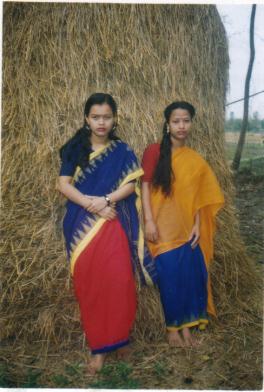
These observations make it clear that in the past the term "Manipuri" has been applied to two distinct linguistic groups: Meitei and Bishnupriya. The "Manipuris," from a linguistic point of view, are divided into two groups, namely, the Meiteis and the Bishnupriyas. The Meiteis entered Manipur from the east; their Language is of the Tibeto-Burman group. The Bishnupriyas entered Manipur from the west; their language is of the Indo-Aryan group.
For the last two centuries, the term 'Manipuri' has been associated also with the Bishnupriya people whenever others referred to them. The Bishnupriyas always considered them to be 'Manipuris."
The records maintained by the British India Government as well as the Government of India in independent India attest to this practice. For example, Sir George A. Grierson, in his Linguistic survey of India Vol -V, Part I, described the Bishnupriya Manipuris by the term "Bishnupuriya Manipuris" ("A tribe known as Mayang speaks a Mongrel form of Assamese by the same name. They are also known as Bishnupriya Manipuri," page 419.)
During the British regime, in the school statistics maintained by the Cachar School Board, Cachar, the main heading "Manipuri" was sub-divided into "Meitei" and "Bishnupriya".
The Census of India, 1961, also subdivided the main heading "Manipuri" into "Meitei" and "Bishnupriya". The Census of India 1971 report defended the use of the nomenclature " Bishnupriya Manipuri".
4. The Bishnupriya Diaspora
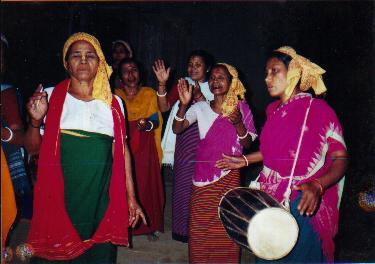
In the early part of the 18th century, for various reasons including repeated Burmese invasions and local oppression, Bishnupriya people moved out of Manipur in large numbers to Cachar, Sylhet, and Tripura. A small number of people migrated to Burma also. Those who remained in Manipur merged with the Meitheis.
Bishnupriya Manipuri was originally confined only to the surroundings of the Lake Loktak in Manipur. The principal localities where this language was spoken are now known as Khangabok, Heirok, Mayang Yamphal, Bishnupur, Khunan, Ningthankhong, Ngakhong, Thamnapoxpi, and so on. However, later, a great majority of speakers fled away from Manipur and took refuge in Assam, Tripura, Sylhet and Cachar during the eighteenth and nineteenth centuries due to the internal conflicts among the princes of Manipur and due to Burmese attack.
Consequently, it was difficult for the small number of Bishnupriyas who remained in Manipur to retain their language because of the impact of Meitei, although Dr. G.A. Grierson, in 1891, found the existence of a considerable number of speakers (1000) in two or three villages near Bishnupur, locally known as Lamangdong.( LSI, Vol -V, Page 419). This Language is now spoken in parts of Assam, Tripura, Manipur(Jiribam Sub-division) in India, in Bangladesh, in Burma and other overseas countries.
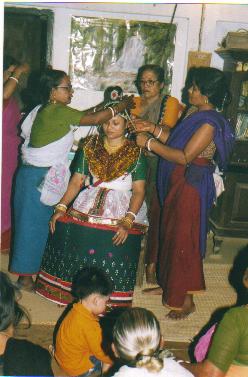
5. Recognition of Meithei as the Manipuri Language, and Consequent Conflict
The 1968 Language Bill passed by the Manipur Government making Meitei (a non-Aryan word) synonymous to Manipuri (an Aryan word) and the inclusion of Meitei language as the Manipuri language in the Eighth schedule of the Constitution of India came as a rude shock to the ethnic and cultural identity of the Bishnupriya-Manipuri speaking people residing in Manipur, Assam and Tripura. They feel aggrieved that their identity as speakers of a Manipuri language that is quite distinct from Meithei has not been given due consideration when Meithei was taken to be wholly synonymous to Manipuri. They feel that their Manipuri identity is as old as the Manipuri identity of the Meitheis. Through this act of associating exclusively the Meithei language with the term Manipuri, they are deprived of this identity and heritage. The Linguistic Survey of India calls the speech of Bishnupriyas Bishnupriya Manipuri. During the British rule the Cachar School Board, and in independent India the Census of India Reports of 1961 and 1971 all refer to Bishnupriya as Bishnupriya-Manipuri. These recent records in their favor and the non-recognition of such records further accentuate the feeling of the loss of identity and heritage among the Bishnupriya Manipuris.
6. Dialects of Bishnupriya Manipuri
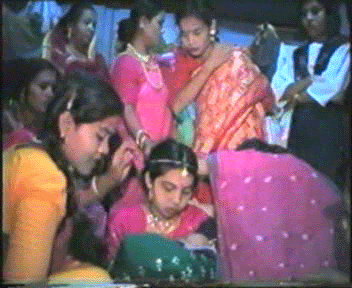
Bishnupriya-Manipuri language is in close proximity with the Sauraseni-Maharastri Prakrit, and also contains pure Vedic or Sanskrit words.
Bishnupriya Manipuri has two dialects, namely,
- Rajar Gang (Kings Village) and
- Madoi Gang (Queens village).
These two dialects, however, exist side by side in the same localities. The Madoi Gang dialect is/was spoken probably in the Khangabok-Heirok area and the Rajar Gang dialect, in the Bishnupur-Ningthankhong area of Manipur. Morphological difference between the two dialects is negligible, but from the point of vocabulary, there are differences.
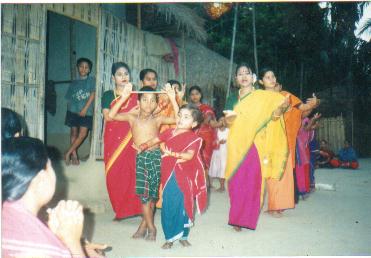
7. Is Bishnupuriya Manipuri a Dialect of Bengali or Assamese?
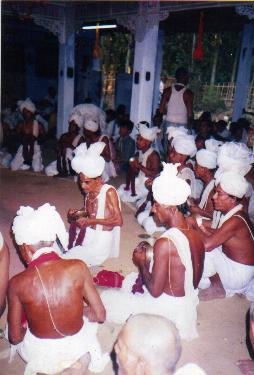
Though there is a correlation between the denotative words of Bishnupriya-Manipuri with those of Bengali, Assmese, and Meitei languages for regional and historical reasons, it does not mean that the original Bishnupriya Manipuri language is lost because of the influence of the surrounding languages nor is it reasonable to think that the Bishnupriya Manipuri language is the formative language of the plains people of Assam, Bengal or Manipur as viewed by certain phoneticians. The phonological and syntactical mainstream of the Bishnupriya Manipuri language was never hampered and the same is even now with its distinct identity. Moreover, it is very unlikely that the plains people of Assam, Bengal, and Manipur would have culturally, linguistically, and politically united together to form a language like Bishnupriya Manipuri used in the Valley of Manipur.
Dr. Suniti Kumar Chatterjee, a renowned Bangla phonetician, listed Bishnupriya Manipuri to be a dialect of Bengali, whereas Dr. Maheswar Neog and Dr. Banikanta Kakti claimed it as a dialect of Assamese. However, their observations are not based on any detailed study of Bishnupriya Manipuri language. The data supplied by Dr. Chatterji does not tally with the actual speech of the Bishnupuriya people from Manipur, Assam, Tripura, or Bangladesh. It appears that his informant or informants used a variety with a mixture of Bengali. The numerous dissimilarities between Bishnupriya Manipuri on the one hand and Assamese and Bengali on the other have not been taken into consideration by these researchers.
Consider the following linguistic facts:
- The difference in verbal forms according to difference in gender. e.g. He goes = Ta jarga, She goes = tei jeiriga.
- The difference in verbal forms according to difference in number. e.g. I am going = Mi Jauriga, We are going = Ami Jiarga.
- Bisnupriya Manipuri has a few case affixes of its own, e.g. 3rd case ending "Lo" = with, 5th case ending "Rangto" =from, 7th case ending "Rang" = in.
- Bishnupriya Manipuri has got a number of affixes, i.e., Pratyas which are unprsent in Bengali/ Assamese.
- Bishnupriya Manipuri has developed a complete T'o form for the future tense, e.g. I shall do = Mi Kortou, He will do = Ta kortoi.
- Bishnupriya Manipuri has got some distinct pronominal forms, e.g. You= Ti, I = Mi, He = Ta etc.
- The language has two distinct dialects.
- The vocabulary of Bishnupriya Manipuri includes more than 8,000 words which do not occur in Assamese or Bengali.
So, Bishnupriya Manipuri is an independent language and cannot be called a dialect of any other language.
8. Conclusion
The term "Manipuri" is as much a matter of sentiment, culture and prestige to the Bishnupriyas, as the term "Meitei" is to the Meiteis. That is why the Bishnupriyas residing in Assam and Tripura have consistently refused the offers of both the state and central Governments to call their language only as 'Bisnupriya' and not Bishnupriya Manipuri. They have voiced their demands through peaceful, and democratic movements over the years. They are afraid that their cultural identity will be lost if the term "Manipuri" is dropped or deleted from the name of their community and language.
Source and References
- Singha, Jagat Mohan & Singha, Birendra. The Bishnupriya Manipuris & Their Language. Silchar ,1976
- Barun Kumar Sinha. Imarging Pattern of the Bisnupriya Manipury Society- A Study in Cultural Identity, an essay. Dept. Of English,S.S.College Hailakandi.
- G.K. Ghose. Tribals and Their Culture in Manipur and Nagaland. 1982.
- Raj Mohan Nath. The Background of Assamese Culture. 2nd edn. 1978.
- Singha, Mahendra Kumar. Prachin Manipurer Itihas. 1965.
- Bidhan Sinha. Cultural Heritage of North-East India, Assam. 1999.
- S.K. Chatterjee. Language and Literature of India. 1963.
- Edgar C. Polome. Language, Society, and Paleoculture.
- Captain E.W. Dun. Gazetteer of Manipur. 1885.
- Sir G. A. Grierson. Linguistic Survey of India, Vol-5. 1903.
- Sir G. A. Grierson. Linguistic Survey of India, Vol-3. 1904.
- Vidyavinode, P. Gaits History of Assam. 1908.
- K.P. Sinha. Bhasatatvar Ruprekha. 1977.
- K.P. Sinha. An Anthological Dictionary of Bishnupriya Manipuri. 1982.
- M. Kirti Singh. Religious Developments in Manipur in the 18th and 19th Centuuy. 1980.
- Md. Abdus Sattar. Aronya Janapade. 1974.
- Sri Sena Singha / Prachinadhunik Samkhipta Manipurer Itihas.
HOME PAGE | BACK ISSUES | Urdu in Karnataka | Bishnupriya Manipuri: A Brief Introduction |Language Policy For Education In Indian States: Karnataka | 20th Century Language Visionaries | Endangered Language: A Case Study of Sansiboli | CONTACT EDITOR
Ashim Kumar Singha
Department of Computer Science and Engineering
Bangladesh University of Engineering and Technology
Dhaka 1000
Bangladesh
E-mail: ashim2000k@yahoo.com